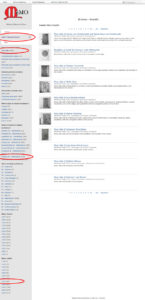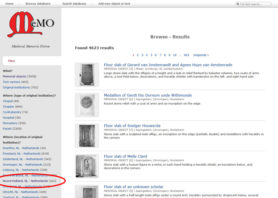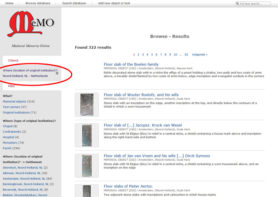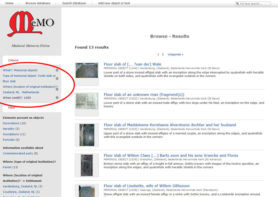Manual 3. Two case studies using Browse database
A first orientation for a research into a specific area
A historian wants to find out whether there are any suitable materials for research into the commemoration of the dead and the formation of identity in several regions in the Low Countries. By way of a first orientation she consults the MeMO database. This database takes the modern provinces as the point of departure, but for the first orientation this is no problem, because the historian can later order the material according to the medieval regions of her choice. As she can only select a single province at one time, she first selects the province of Noord-Holland.
She requires both an overview of the objects and the texts and of the holding institutions. She can therefore skip the main facets What? and Where (type of original institution)? and go straight away to the main facet Where (location of original institution)?.
She gets a results list with 322 records which she can now browse through. She finds that the results list presents the memorial objects first, followed by the text carriers and then the holding institutions.
A genealogist tracing the tomb slabs or tomb monuments of his ancestors
A genealogist researches old families in Zeeland and he has succeeded in tracing some of them to the mid fifteenth century. He wants to use the MeMO database as one of his tools to find even earlier traces of these families and he starts looking for tomb slabs and floor slabs pre 1450. Using Browse database he can subsequently select the following criteria:
- Memorial Objects
- Type or memorial object: Tomb slab or floor slab
- Where (location of original institution): Zeeland
- When(until): 1450

The Browse Database function, before most of the criteria have been selected (note: ‘Memorial Objects’ has been preselected).
This search results in a total of thirteen slabs.




